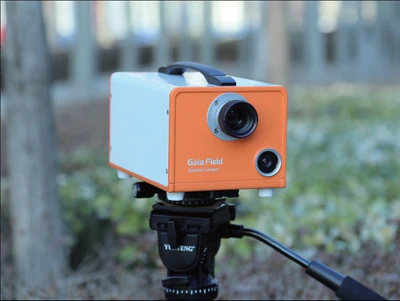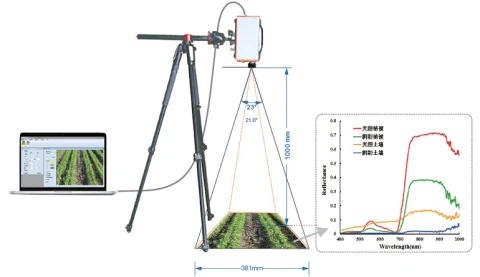Description
e GaiaField (Pro) portable hyperspectral system is an ultra-portable hyperspectral imaging instrument independently developed and designed by Shuangli Hepu with independent technical intellectual property rights (patent number: 2015105650509). The system covers visible light to short-wave infrared bands. The built-in processor can be controlled by mobile phones, iPads, laptops and other terminal devices to enable the system to perform real-time image acquisition scanning, real-time calibration, and real-time result output. On the basis of obtaining the target image information, it can also obtain spectral information of hundreds or even thousands of bands to achieve the "unification of images and spectra" of the target.
The GaiaField (Pro) system is light and flexible, has excellent battery life, is intelligent, has complete data analysis and processing functions, and can monitor, calibrate, and output inversion results in real time. It is widely used in outdoor and laboratory applications. For example: military fields such as target detection and identification, camouflage and anti-camouflage, remote sensing of ground objects and water bodies (water quality monitoring), modern precision agriculture (plant phenotype monitoring) and other ecological environment monitoring fields, criminal investigation, cultural relics protection (authenticity identification), biomedicine (cell property classification and identification), plastic waste (classification and identification), industrial sorting of tobacco leaves (quality optimization), chemical gas combustion flame (composition determination and discrimination), geological ore analysis, oil and gas rock formation fluorescence analysis, biomedicine, material performance testing and other fields.
GaiaField Pro Hyperspectral Imaging Camera
Specifications
| Number Of Channels: | >4 |
|---|---|
| Sensor Type: | CCD |
| Wavelength Range: | 400 – 1000 nm |
| Spectral Resolution: | 3.5 nm |
| Numerical Aperture: | F/2.8 |
| Digital OutPut: | 12 bit |
| Lens Connector: | C-Mount |
| Dynamic Range: | >66 dB |
| Light Transmission: | >50 % |
| Pixel Size: | 4.54×4.54 μm |
| CCD Pixels: | 1936×1456 |
Features
- Customizable selection of wavelength range of interest;
- Optional number of spectral channels;
- Setting of the number of spectral channels within any wavelength range can be achieved;
- The acquisition frame rate can be increased by setting the number of bands;
- Each set of data can be stored independently, and one-click reflectivity calibration can be achieved through software;
- Individual and batch data processing can be achieved;
- Inversion results can be output in real time by inputting the corresponding model;
Note: The above functions only support visible-near infrared cameras;
Applications
Frequently Asked Questions
What is GaiaField-Pro (GFP)?
How does GaiaField-Pro work?
Is GaiaField-Pro portable?
What are the key features of GaiaField-Pro?
What are the applications of GaiaField-Pro?
Similar Products
Your inquiry has been received.
Create an account by adding a password
Why create an account?
- Auto-complete inquiry forms
- View and manage all your past messages
- Save products to your favorites
- Close your account anytime — no hassle


